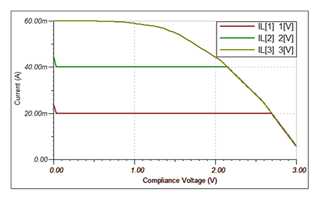Other Parts Discussed in Thread: OPA328, OPA3S328, OPA2392
Laser diode drivers and Mach Zehnders play an impactful role in optical networking, enabling optical signals to travel as far and as fast as today’s standards. With the advancement of precision amplifiers, laser diode drivers (outlined below in red) and Mach Zehnders (outlined below in green) can perform at higher levels, resulting in faster and more reliable communication networks. In this post, we present key amplifiers that have been designed for optical modules.

Figure 1: Optical module reference design
Selecting the correct amplifier for laser diode drivers
Laser diodes ignite the process for sending data through optical signals. They emit coherent monochromatic light that is essential for transmitting data over long distances. Laser diodes are current sensitive devices [that require a low noise current source because any noise at the input of the diode will be copied at the output. This can change the intensity of light emitted and damage optical waveguides resulting in damage to other parts. Due to this potentially destructive nature, an op amp with low noise and low offset drift is required. The amplifier must also come in a small package to meet board demands.
As explained above, laser diode drivers need an op amp to precisely control the current. The OPA392 and OPA328 are ideal for this application for their excellent DC performance and small package options.
| Device | Voltage Range (V) | Offset Drift(typ, µV/C) | Offset(max, mV) | Ib (max, pA) | Noise @ 1k(nV/√Hz) | Output Current(A) | Package |
|
OPA392 |
1.7 to 5.5 |
0.16 |
0.01 |
0.8 |
6.5 |
0.065 |
SOT-23 |
|
OPA328 |
2.2 to 5.5 |
0.15 |
0.05 |
1.0 |
9.8 |
0.065 |
SOT-23 |
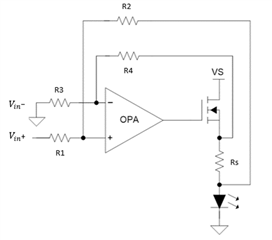
Figure 2: Howland Current Pump with Transistor
A simple yet effective laser diode driver can be achieved with an improved version of the Howland Current Pump which uses a difference amplifier to impose a voltage across a shunt resistor (Rs), creating a voltage-controlled bipolar current source. With this configuration, the current entering the diode is directly proportional to the gain of the amplifier, the differential input voltage, and the value of the shunt resistor. An estimation of the load current and the amplifier gain can be found using the following equations.


For more information on Howland Current Pumps, view the following link.
Analysis of Improved Howland Current Pump Configurations
A TINA simulation has been created to show the effectiveness of a Howland Current Pump in combination with the OPA392 and a TI 2N2484. In this configuration, the gain of the amplifier is 0.98V/V, the differential voltage is 1V, and the shunt resistor (Rs) is 20 ohms. The key takeaway is the load current at a 1V differential voltage results in the expected calculated value of 98mA as shown in the graph.
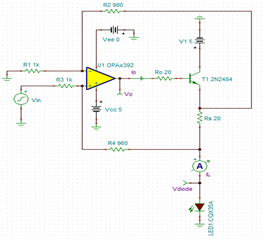
Figure 3: Laser Diode Driver Schematic with OPA392 and TI 2N2484
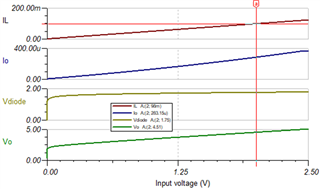
Figure 4: DC Transfer Characteristic of Laser Diode Driver
Selecting the correct amplifier for Mach Zehnder applications
Modulation has been the bread and butter of fast data transmission. It has enabled speeds of 100+ Gbps and lowered distortion in optical signals. Op amps play a support role in this application by controlling a sink or source current. This current is driven through resistive material that heats the optical waveguide which results in a phase shift in one of the signals. Because thermal control is required for precise phase shifts, amplifiers with low drift have been selected for this application. In addition, the amplifier must have a small form factor and have high output current to produce sufficient heat.
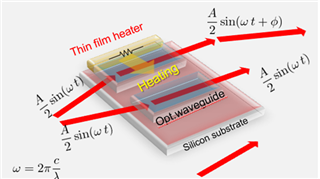
Figure 5: Mach Zehnder Modulator
The OPA3S328 and OPA2392 are recommended for Mach Zehnder applications because they have low drift, have small package options, and high output current.
| Device | Voltage Range (V) | Offset Drift(typ, µV/C) | Offset(max, mV) | Ib(max, pA) | Noise @ 1k(nV/√Hz) | Output Current(typ, A) | Package |
|
OPA2392 |
1.7 to 5.5 |
0.16 |
0.01 |
0.8 |
6.5 |
0.065 |
1.2x1.2 WCSP |
|
OPA3S328 |
2.2 to 5.5 |
0.15 |
0.06 |
10 |
9.8 |
0.063 |
3.5x3.5mm VQFN |
A TINA simulation of biasing a Mach Zehnder with the OPA3S328 and OPA2392 has been created to show the different output currents at different input voltages and compliance voltages. As shown in the simulation, the OPA3S328 output current remains high across nearly the entire range of compliance voltage of 3V while the output current of the OPA2392 drops off around 1.7V compliance.
Figure 6: OPA3S328 Mach Zehnder Biasing
Figure 7: OPA2392 Mach Zehnder Biasing
-By Nicholas Rubalcaba



